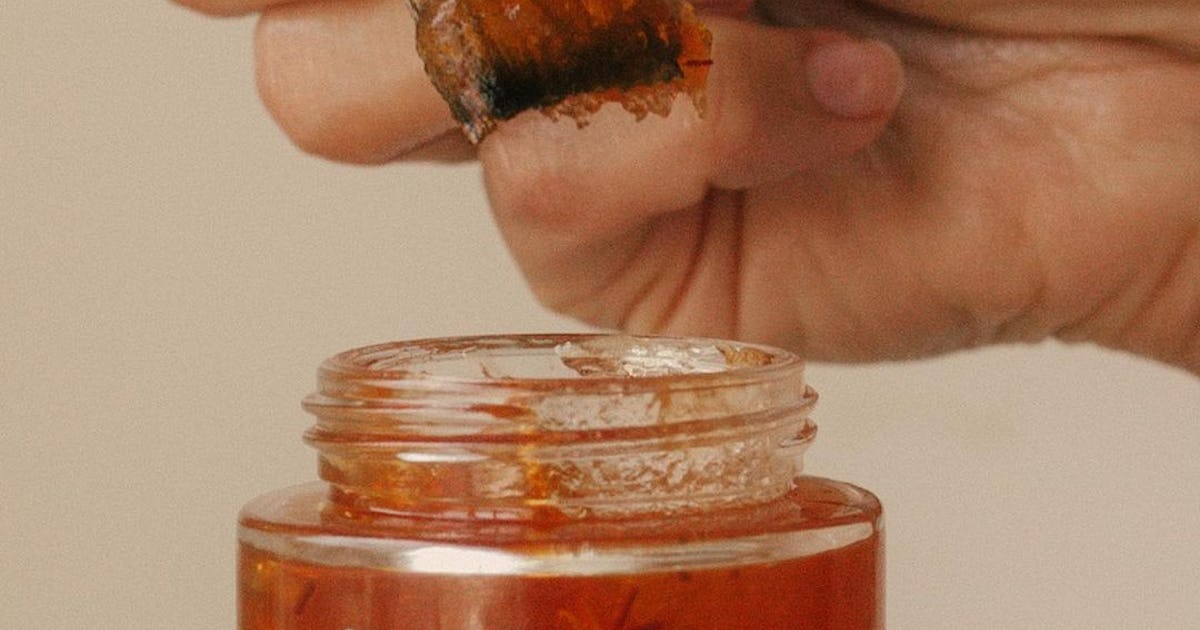- Chhattisgarh is losing its state animal, wild buffalo. State government estimates say that there are only 25 to 35 wild buffaloes left in Chhattisgarh.
- The government had attempted to clone the breed in 2014 as a way to revive the buffalo population, but experts doubt the success of this effort.
- The state government has also relocated a pair of buffaloes from Manas Sanctuary in Assam in year 2020. Once the pair reaches maturity level for reproduction, breeding attempts will start.
The state animal of Chhattisgarh, the wild water buffalo (Bubalus arnee) is in danger. Despite all the efforts by the government, the population of wild buffalo is not increasing in the state. From attempts of cloning to bringing wild buffaloes from Assam, many experiments have been carried out, but yet the wild buffalo population is not flourishing.
According to the state government’s data, the number of wild buffaloes in the entire state is estimated to be from 25 to 35 individuals. However, the total number of wild buffaloes that have been counted in government surveys is only 13 in the state. Ten of these buffaloes are in Sitanadi Udanti Tiger Reserve, while two buffaloes from Manas National Park in Assam are kept in Barnawapara. Similarly, a wild buffalo clone has been kept in Nandanvan Jungle Safari in Raipur.
The forest department is also crossbreeding wild buffaloes with domesticated buffaloes to increase the population, but experts are raising a red flag on this effort, saying that such measures will affect the purity of the wild buffalo breed, and its far-reaching consequences can be damaging.
Shrinking forests lead to a decrease in buffalo population
Categorised in Schedule I under India’s Wildlife Protection Act 1972, the wild buffalo is listed as endangered in the Red Data Book of the International Union for Conservation of Nature (IUCN). With its long horns and a height of 150-190 cm, the weight of the buffalo ranges from 800 to 1200 kg; the weight of female wild buffalo is less in comparison.
Due to continuous hunting, changes in natural habitat, genetic disorders and diseases due to contact with domestic buffaloes, the population of this breed of buffalo has gone down worldwide and currently only four thousand wild buffaloes exist in the world.
Wild buffaloes have previously been reported in large numbers from Nepal, Bangladesh, Sri Lanka, Bhutan, Thailand, Vietnam, Cambodia, Myanmar, Java, Sumatra and Malaysia. But in the last century itself, this wild buffalo has gone extinct in many countries. In India now, the wild buffalo, the largest mammal found in the country after elephant and rhinoceros, is struggling to save its existence today.

Within India, until half a century ago, there is evidence of a good population of wild buffalo in Arunachal Pradesh, West Bengal, Odisha, Andhra Pradesh, Maharashtra, and Bihar. But gradually, the number of wild buffaloes in these states kept decreasing. Experts say that the pure breed of wild buffalo in India is now left only in Assam and Chhattisgarh.
According to the forest department documents, the Udanti Sitanadi Tiger Reserve of Chhattisgarh has been the natural habitat of the buffaloes. Records show that earlier, this entire forest was in Bindranwagarh Zamindari, where anyone could hunt by paying Rs. 25. By issuing notification number 1905-1517-4 on 27.08.1935, the government banned the hunting of wild buffalo. But in this Zamindari, the hunters were allowed to hunt one gaur, one reindeer, two deer and one sambhar.
After the end of the Zamindari system, a change was brought in the hunting rules by issuing notification number 788-2319 on 19.08.1953. Under this, hunting of wild buffalo could be done with the government’s permission, but hunting of gaur was not allowed. The hunting of gaur, wild buffalo, reindeer, tiger, sambar, leopard, bear and chital could be done by paying a fee prescribed in the hunting rules of 1955. Following that, hunting was completely banned by issuing notification number 6036-10 (2) 71 dated 11.11.1971. But by then, it was probably too late for the wild buffalo population.
Read more: Conserving the Toda buffalo before it is too late
The forest department had claimed 240 buffaloes in this entire area (what is now Chhattisgarh state) in 1986-87 in undivided Madhya Pradesh. But a year later, in 1988, independent wildlife experts said there were only 104 buffaloes in the same area. After Chhattisgarh became a separate state in November 2000 and the state animal status was given to the wild buffalo, this number went down further, and by 2004 the total number of wild buffalo in the whole of central India was less than 70.
Amidst claims of buffaloes in the areas of Udanti Sitanadi Tiger Reserve and Indravati Tiger Reserve, the government decided to count the number of wild buffaloes. Due to Maoist activities, the forest department had been avoiding the survey in Indravati. But, survey of wild buffaloes was done in Udanti-Sitanadi in 2007, a total of seven wild buffaloes were found there, in which only one was a female.
The state government formed a task force for the conservation and promotion of wild buffalo after the survey’s result. A campaign to save the buffalo was started in collaboration with the Wildlife Trust of India. The state government has not taken service of premier institutes like Center for Cellular and Molecular Biology, Wildlife Institute of India, Indian Veterinary Research Institute. Entire conservation work was handed over to only the Wildlife Trust of India.
Cloning of wild buffalo backfires
The state government has been taking many steps to increase the population of wild buffaloes in the state. Tracking buffalo’s movement was one of the efforts. Department has installed radio collars to buffaloes for tracking and conservation. To increase the population of buffaloes, a huge enclosure was constructed in a part of Udanti Sitanadi Tiger Reserve and the remaining buffaloes were kept in this enclosure.
Keeping buffaloes in enclosure backfired as female buffalo find this environment stressful and gave birth to male calves.
For example, a female buffalo named Asha was kept in an enclosure at Sitanadi Udanti in 2005, and during this time, Asha gave birth to 6 males and one female calf named Khushi. On February 18 last year, after the death of Asha, the only breedable female buffalo, the efforts to breed a buffalo came to a halt.

Meanwhile, all hopes were pinned on Dipasha, the alleged clone of Asha.
On December 12, 2014, the government claims that a cloned female wild buffalo named Deepasha was born at the National Dairy Research Institute, Karnal, from a piece of Asha’s ear kept in the enclosure of Sitanadi Udanti.
Experts are raising questions over the appearance of the clone as it is looking like domesticated Murrah buffalo.
Dr. Prabhat Palta, Chief Scientist of National Dairy Research Institute in Karnal and Head of Animal Biotechnology Center, who cloned this alleged wild buffalo, had accepted that his institution has not conducted a detailed study on the ‘genetic make-up’ of the cloned buffalo in 2018.
“Paternity of cloned wild buffalo calf was confirmed using microsatellite markers. However, microsatellite markers are of domestic buffalo as no information is available on microsatellite markers of wild buffalo,” said Palta.
However, more than one crore (10 million) rupees were spent on this first alleged wildlife clone in the world. In 2018, this clone was brought to Raipur, for which an enclosure was constructed at Nandanvan Jungle Safari in Raipur at a cost of Rs 2.5 crore. However, the cloning attempt did not contribute much to the increase of population of wild buffaloes in the state.
Marcibella, DFO of Nandanvan Jungle Safari, said that the Central Zoo Authority has contacted and sought opinion from the Center for Cellular and Molecular Biology, Hyderabad, Wildlife Institute of India, Dehradun, National Dairy Research Institute of Karnal and Indian Veterinary Research Institute, Bareilly, for natural insemination. The Central Zoo Authority did not allow the mating of any male buffalo with this clone.
“The proposal given to us by the Center for Cellular and Molecular Biology, Hyderabad for artificial insemination is very costly. Hence, no further action has been taken in this matter,” said M Marcibella.

Relocating buffaloes from Assam
Even after all the efforts, when there was no expected increase in the number of wild buffaloes in the state in 15 years, the forest department planned to bring in wild buffaloes from Assam.
The department conducted a genetic study of wild buffaloes of Assam before relocating buffaloes in the state. In April 2020, a pair of buffalo were brought to Chhattisgarh from Manas National Park in Assam, 1900 km away from the state, after formal consent from the Center and the Assam government. They are now kept in Barnawapara Sanctuary.
It has been more than a year since these buffaloes were brought to Chhattisgarh, but no effort has been made to breed.
“The plan was to bring five males and one female buffalo from Assam. Last year we were able to bring two buffaloes. But they are still young, so their reproduction cannot be thought of. It will take some time now,” Krishnaram Carpenter, DFO, Barnawapara Sanctuary, told Mongabay-India,
Neha Samuel, a member of the Wildlife Board in Chhattisgarh, said that the state needs a clear strategy regarding the state animal. What has been done for its conservation and what is to be done, the action plan is necessary.
“There are reports of wild buffalo sightings in the Indravati Tiger Reserve of Chhattisgarh. Instead of bringing buffaloes from Assam, it would be better if efforts are made to preserve Indravati’s buffaloes. Apart from this, a common action plan can also be prepared with Odisha and Maharashtra,” said Samuel.
Read more: Forest department identifies wildlife corridors in Chhattisgarh for conservation
Banner image: Wild buffalos, Kaziranga National Park, Assam. A pair of buffalo were relocated to Chhattisgarh from Manas National Park in Assam. Photo by Gregoire Dubois/Flickr



















/https://specials-images.forbesimg.com/imageserve/604ad3acf728cc29468fec2e/0x0.jpg?cropX1=0&cropX2=846&cropY1=47&cropY2=523)
![See Inside the Amazing Homes of State Music’s Queens [Pics]](https://townsquare.media/site/204/files/2020/08/tim-mcgraw-faith-hill-mansion-california-pictures.jpg?w=1200&h=0&zc=1&s=0&a=t&q=89)












